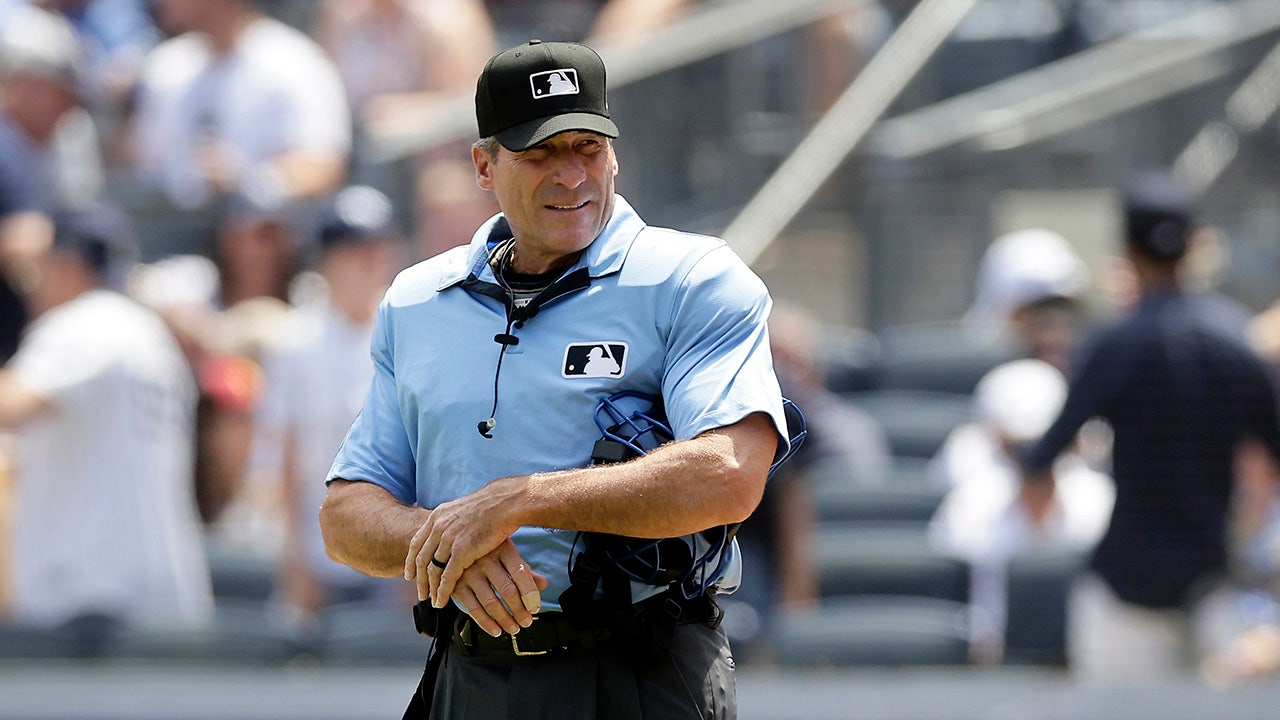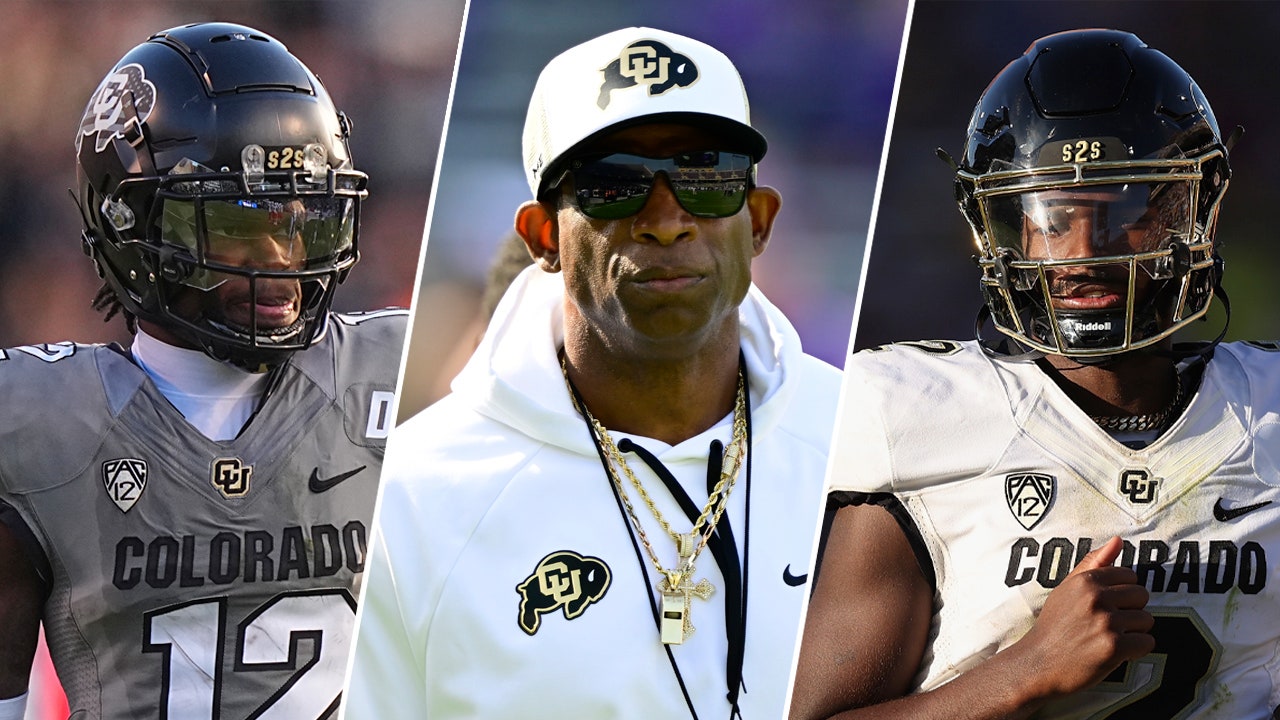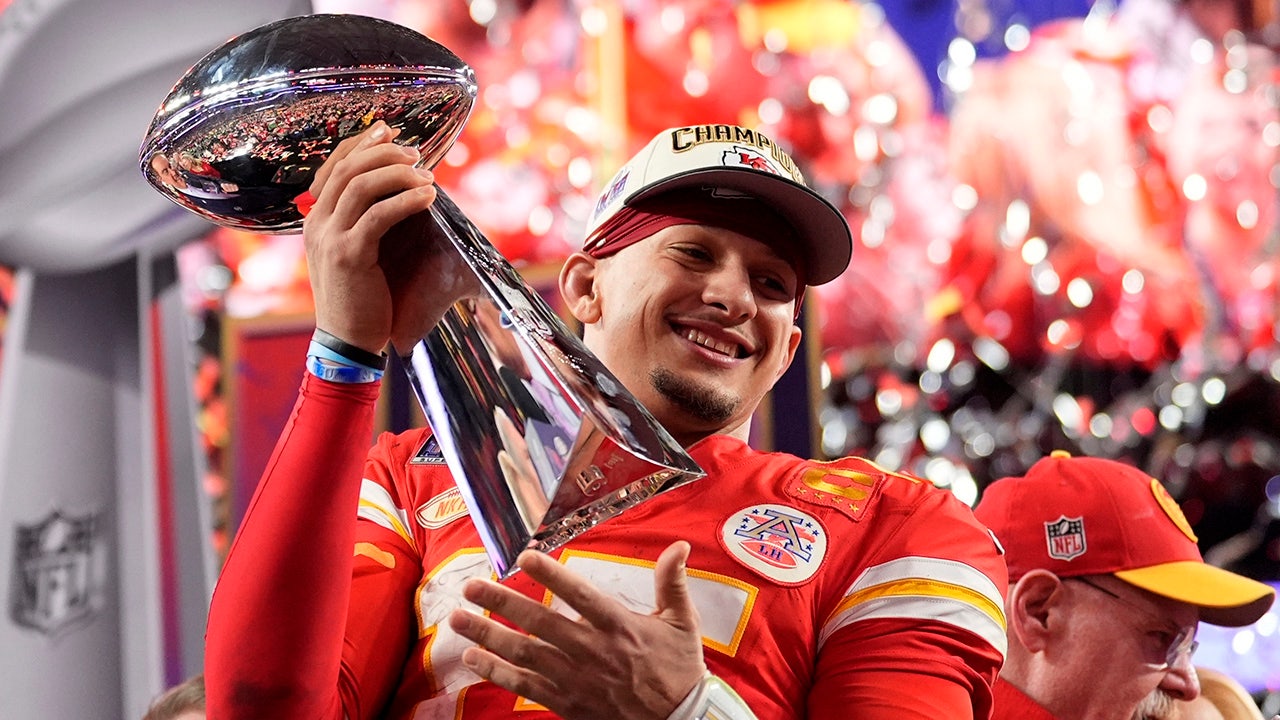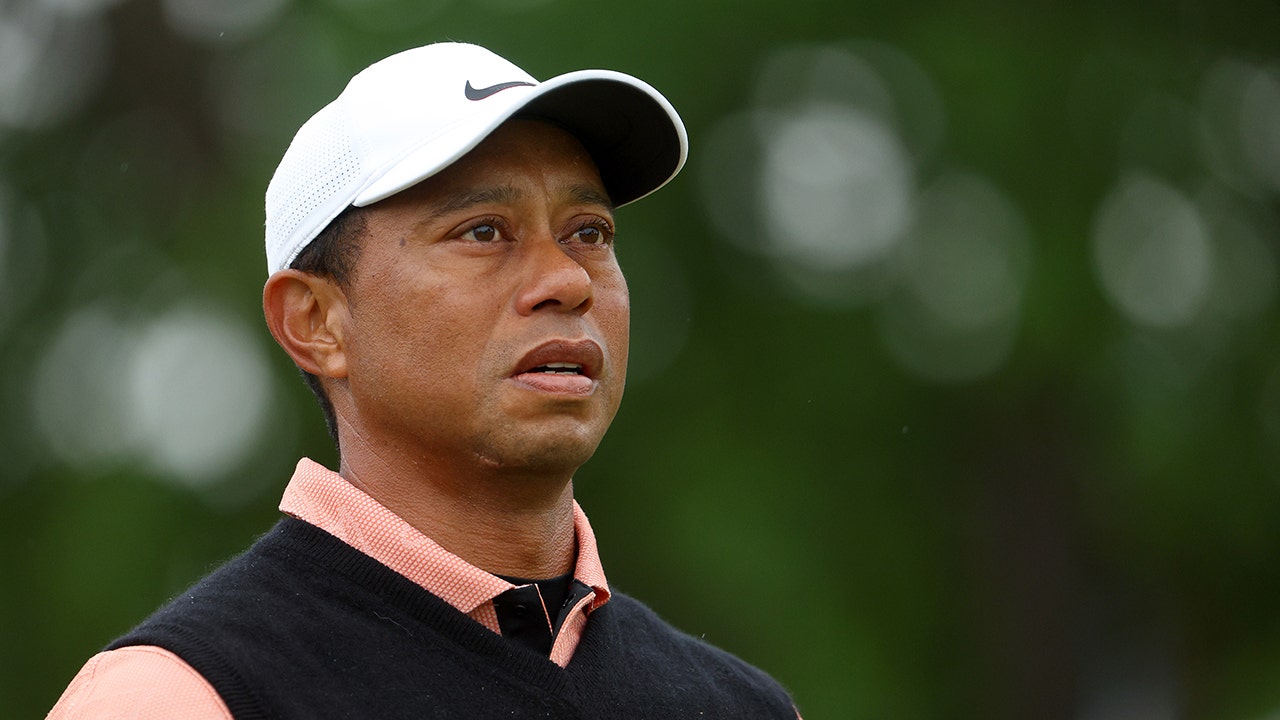MEXICO CITY — One day in late July, Robinson Canó finished a workout and stepped out into a quiet hallway at Alfredo Harp Helú Stadium. He had two hours before his team, the Diablos Rojos del Mexico, would face the Conspiradores de Queretaro in an afternoon matinee, and he had a pregame routine to complete.
He needed to eat. He needed to stretch. And, at some point, he needed to finish an interview about why, at the age of 41, he was here in Mexico City, an eight-time MLB All-Star plying his trade in the Mexican League, where the salary cap is around $475,000 per month for an entire roster of 30 players.
“Cinco minutos,” Canó said, as he headed off to finish another task.
It was Saturday, and it had been a long week. The day before, the Diablos had arrived home from Leon at close to 4 a.m. On Friday night, Canó had collected two hits in an 18-11 victory over Queretaro.
Canó made more than $260 million in his career, including $240 million in a deal signed with the Mariners a decade ago. Were it not for two performance-enhancing drug suspensions, he would likely be a lock for the Hall of Fame. The Mexican League has long been a refuge for minor-league castoffs, four-A players and former major-leaguers with checkered pasts. But it’s rarely, if ever, been a place for a player like Canó.
So you might suspect that Canó spent the summer collecting a (relatively modest) check and serving as a (washed-up) draw for Mexican baseball fans. But that’s not what happened. Instead, Canó arrived this spring and immediately became the best hitter in the league, leading the Diablos — Mexico’s most storied club — to the best regular season in franchise history.
Canó finished the regular season batting .431, winning the “Champion Bat” for the highest average in the league and setting a new club record — which also tied for the highest average in the Mexican League this century. Meanwhile, the Diablos finished the regular season with a staggering 71-19 record, the highest winning percentage in league history. They entered Thursday with a 2-0 series lead over Puebla in the best-of-seven first round of the playoffs.
Canó’s arrival coincided with a Mexican League season that saw a record number of former big-leaguers thanks to relaxed rules on foreign imports, as well as increasing investment from club owners. (The Diablos also employ Trevor Bauer, the former MLB pitcher who served what amounted to a 194-game suspension for violating the league’s Joint Domestic Violence, Sexual Assault and Child Abuse policy.)
But after months of watching Canó dominate helpless pitchers, transforming into either the Ted Williams of the Mexican League, or perhaps its answer to Lionel Messi, the biggest question seemed to be: Why?
Why was Canó, at 41, grinding like he was back at second base for the New York Yankees — scouting pitchers who peaked at Double A, helping teammates who just want to survive a few more years, pushing himself to play five or six times per week?
“For me, the joy that I have is being able to be on the field,” Canó says. “I love the game. I still have that in me. I want to keep playing. I get a chance here.”
At some point, as his skills faded, his major-league career ended, and he faced his own baseball mortality, Canó considered what he would like to do with all that free time.
He opted for more baseball.
The Mexican Baseball League, or LMB, was founded in 1925. And for most of its existence, it has been a waystation for interesting outsiders. Consider the story of George Brunet, a lefty pitcher who debuted for the A’s in 1956, spent 15 seasons kicking around the majors, and then headed for Mexico in 1973, where he pitched for another 16 years, earned the nickname “El Viejo” (The Old Man), tossed a no-hitter at age 42, and suffered a heart attack in 1981. He returned the next year and won 14 games for Veracruz at age 47.
Or consider James Bell, better known as “Cool Papa,” the Negro Leagues star who batted .437 for Veracruz in 1940, joining a cadre of Black players from the era who were welcomed south of the border.
Then there was the pitcher from the Dominican Republic, who, when his six-game major-league career was over, came to Mexico and enjoyed brief stints with teams in Mexico City and Aguascalientes. José Canó didn’t leave much legacy in Mexico, but he did let his young son swing a bat on the field in Aguascalientes when he came to visit.
Robinson Canó recalled the story of his father one day in February, when club officials from the Diablos were visiting him in Miami and trying to sell him on a summer in Mexico. Canó’s career stateside had been waning since 2020 when, as a member of the Mets, he had tested positive for the anabolic steroid Stanozolol. It was his second violation of MLB’s policy on performance-enhancing drugs, which triggered a year-long suspension in 2021. When he returned to the Mets in 2022, he batted .195 in 12 games before being released.
Canó kicked around with the Padres and Braves, toiling briefly at Triple-A El Paso, before being released for good in August. Not ready to hang up his cleats, he continued to play winter ball in the Dominican and invested in Baseball United, a coming startup league focused on growing the sport in the Middle East and South Asia, which announced a partnership with the Saudi Baseball and Softball Federation in March. But Miguel Ojeda, a former big-league catcher and the Diablos sports director, wanted to offer a completely different pitch.
Considered by some to be the “New York Yankees of Mexico,” the Diablos Rojos play their home games at Alfredo Harp Helu Stadium, a modern ballpark that cost $166 million, opened in 2019 and quickly became the jewel of the league. Tucked between turns of the Autódromo Hermanos Rodríguez — Mexico City’s sprawling Formula One track — the stadium’s white canopy roof can be seen from its surrounding working-class neighborhood. The venue’s namesake is the Diablos’ owner, Harp Helu, a billionaire businessman who is also an investor in the Padres.
Ojeda emphasized to Canó that the Diablos’ home clubhouse was major-league caliber — weight room, sauna, kitchen, chef — and that the team could offer security during his stay. (Most players live at a nearby hotel.) He mentioned the possibility of up to 20 import players, meaning the roster would be filled with players with big-league experience. “It would be a big boom for baseball,” he told Canó.
Ojeda was also honest: The Diablos have more championships than any club in Mexican League history — 16 in total — but their last title was in 2014. Their fans were getting restless.
“We’ve been dominating it during the regular season,” Ojeda said. “We just haven’t been able to win.”
Diablos officials declined to reveal how much they offered Canó, but said that Canó and Bauer were “the best paid players in the history of this team.” One American player, who asked for anonymity because he was not authorized to discuss salaries, said most players with major-league experience were making anywhere from $15,000 to $25,000 per month, while Canó was thought to receive a premium over that. The monthly salary cap for a Mexican League roster is roughly $475,000 — equating to an average salary of just less than $15,000 per month — though Ojeda said the team had exceeded the cap and was paying a luxury tax.
In the end, money wasn’t a sticking point. “He doesn’t need the money,” says Diablos manager Lorenzo Bundy. So when Canó agreed to sign, the Diablos front office and coaching staff emphasized one thing: The team wanted to ensure that Canó was fresh and healthy for the postseason, so they would limit his playing time to three or four games per week.
But then Canó showed up in the spring and met with Bundy.
“I came to win,” Canó said.
Pretty soon, he was batting over .400.
So Bundy put him in the lineup each day.
On a cool night in late July, Canó stepped into the batter’s box in the first inning against Queretaro. The temperature hovered in the high 50s. A mix of reggaeton and American pop music played. A crowd of more than 10,000 fans spun noisemakers, blew into plastic horns and chanted “Vamos Diablos,” creating a near-permanent din.
Canó faced Wilfredo Boscan, a 34-year-old right-hander from Venezuela whose only big-league experience consisted of six appearances for the 2016 Pirates. Canó slapped a single to left field on the first pitch. One inning later, he stepped up again and blooped another single into center.
Canó is a little thicker in the midsection these days, and his hands are slower. But the lefty swing, for the most part, is the same one he possessed during nine seasons with the Yankees.
“He’s got a beautiful swing,” said Pirates manager Derek Shelton, who managed Canó in rookie ball. “It has never changed.”
When Canó was playing for the Gulf Coast League Yankees in 2001, Shelton decided that he was “the smartest baseball player at that age” that he had ever seen. Canó was 18 and flashy, the kind of player who would charge hard for a slow roller and flip the ball behind his back. Shelton was always reminding Canó to use two hands, quoting a phrase he learned from his own father: “Robbie, God gave you two hands for a reason.”
Canó debuted with the Yankees in 2005, in the twilight of a dynasty, and grow into one of the best second baseman in the league. He helped New York win the World Series in 2009, and for a moment seemed like a Yankee lifer. But then came two moments that defined the rest of his career: In 2013, he fired agent Scott Boras, joined Jay-Z’s Roc Nation agency and departed New York for Seattle. And then, five years later, he tested positive for the diuretic furosemide, a banned substance that landed him an 80-game suspension.
Canó would finish his career with 335 home runs and 68.1 Wins Above Replacement, better than Roberto Alomar or Ryne Sandberg, two second basemen who reached the Hall of Fame this century. But that positive test — coupled with a second in 2020 — is likely to mar Canó in the eye of Hall of Fame voters. Canó maintains that he has not given much thought to his own case.
“I never paid too much attention or looked deep into what it takes — what type of numbers or whatever,” he said. “If things happen, great. If not, I’m always going to be thankful for the years that I played. I accomplished a lot of things.”
If Canó’s teammates on the Diablos are curious about his past, it has little to do with controversy. One day this summer, Jimmy Yacabonis, a former big-league lefty, was working out in the weight room with Canó when a song by rapper 50 Cent came on the stereo.
“Hey Robbie,” Yacabonis said, “did you ever meet 50 Cent?”
Canó whipped out his phone and pulled up a photo of him and 50 Cent from his time in New York.
“He’s very down to earth,” Yacabonis said. “For a guy that’s that high profile to be that cool and that laid back around everybody, he’s an awesome teammate, honestly.” Earlier this summer, Canó decided to outfit the team with personalized cleats.
But what really caught his teammates’ eye was his everyday diligence. He studied opposing hitters and doled out tips. He was a presence in the clubhouse. If he made a mistake in the field, he would corner the pitcher for a quick debrief. He maintained a routine just as if he was still playing for the Yankees.
“He’s seen a million games and been part of a million games,” said Diablos pitcher Ryan Meisinger, who last appeared in the majors with the Cubs in 2021. “If he sees something, he lets us know.”
Canó still has a flair for the dramatic. One day after collecting two hits against Queretaro, he ranged to his right at second base and retired former big leaguer Leonys Martin on a nifty side-arm throw, the kind of play he made for years in New York.
Back then, when Canó was starring for the Yankees and Shelton was coaching for Cleveland, the coach received a signed jersey from his former player.
The inscription included one phrase: “God gave you two hands for a reason.”

Robinson Cano was a perennial star with the Yankees, and helped them to a 2009 World Series win, before leaving for Seattle. (Jim McIsaac / Getty Images)
There is a joke inside the Diablos clubhouse that Canó, at age 41, is the greatest hitter in the world.
“It’s like ‘create-a-player’ on (MLB) The Show,” Meisinger says.
He is Ichiro Suzuki. He is Rod Carew. He is the Mexican League’s Ted Williams, batting .400 and leaving his teammates in awe. When Canó heard the Williams comparison earlier this summer, he laughed.
“Come on,” he said. “Not even close!”
So how does one make sense of what Canó is doing?
The competition level of the level can be inconsistent. Some clubs — like Mexico City or Monterrey — can claim Triple-A quality. But much of the league is probably closer to Double A, and Kevin McCarthy, a former Royals pitcher who plays for Nuevo Laredo, admits “you might run into a Low-A game here and there.” One veteran scout says the league is filled with “throwers and not pitchers.” It is also a hitter’s paradise.
Mexico City plays their home games at an altitude of 7,350 feet — more than 2,000 feet higher than Coors Field in Denver — while more than a third of the league plays above 5,000 feet. McCarthy also cited the prevalence of turf fields, which can lead to more singles on ground balls. Another long-term factor has been the league’s reputation for loosely enforcing performance-enhancing drugs. The league does test its players, however.
Bundy, who has managed at Double A and Triple A, compared Canó’s .431 average to someone batting around .370 in the Pacific Coast League.
“I feel like in this league, a lot of the guys try to pitch to his holes,” Yacabonis said. “But some of the guys aren’t able to do that. And when they leave stuff over the plate, he’s ready to hit it.”
The question of how to understand Canó’s numbers has even been a topic of conversation among Diablos pitchers, a group which includes former big-leaguers Alex Claudio, Conner Menez and Daniel Ponce de Leon.
“It’s video game numbers,” Meisinger said. “I don’t know. We were talking about it in the bullpen the other day. He comes up with a runner on second: ‘Well, here comes a double.’ I don’t really know how to explain it.”
The simplest way to describe Canó’s summer in Mexico?
“Fun,” he says.
The Diablos were a juggernaut. He played at a high level. The cheers from the Mexican fans were rejuvenating.
The Diablos led the league in attendance, averaging 11,761 fans per, which was up 12 percent from last year and more than 60 percent from 2019, the last season before the pandemic. They are a heavy favorite to win their first championship in a decade. But one thing Cano noticed was how much opposing fans cared.
“Even if the other team is losing, they’re still singing,” Canó said.
Canó is not one to look back — or forward, for that matter. He might consider a return to Mexico next year. The inaugural Baseball United league in the Middle East kicks off in 2025. At some point, he says, he’d love to work in a major-league front office. He also wants to focus on being a dad to his two children.
His career was not perfect. But when he considers it in total, he thinks of the World Series championship, the successes on the field and the experiences he had.
“I think that everyone has their time,” he says. “So, I think that I had my time.”
He again mentioned the memory of his father playing in Mexico.
“This is something I talked to a lot of friends and people about,” he says. “You can go and just play and have fun.”
(Top image: Daniel Goldfarb / The Athletic; Photos: Carlos Santiago / Eyepix Group / LightRocket via Getty Images)






